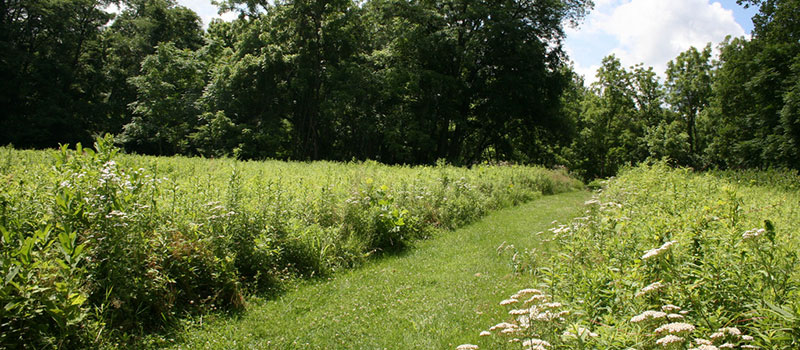Limiting the Impacts of Development on Nature: Comprehensive Natural Resource Protection Standards
Natural resources, from floodplains and wetlands to forested hillsides, provide many sustainability benefits including improving water and air quality, stabilizing soils, reducing stormwater run-off, providing wildlife habitat, and improving the overall quality of life in a community. Unlike man-made infrastructure, most natural resources (also called "green infrastructure") are self sustaining if they are protected from damaging land use practices. For long term sustainability, man-made infrastructure cannot compare with a tree, whose roots reduce erosion and leaves improve air quality, and shading benefits for aquatic life along streams. Municipalities can play an important role in sustaining natural resources by adopting comprehensive protection standards within their municipal ordinances.
Cedar Hollow PreserveThe most commonly implemented resource protection standards limit or prohibit development in designated floodplain areas. Floodplain protection ordinances which prevent construction on and disturbance of floodplains are perhaps the most common example of the protection of green infrastructure at the municipal level. Restriction of development in floodplains greatly reduces the possibility of flood damage, while at the same time creating open spaces that provide wildlife habitats and corridors.

A more holistic approach to resource protection involves regulation of steep slope, wetlands, woodland areas, and protection and enhancement of riparian buffers. Although state and federal regulations provide some protection for natural resources, such as wetlands and floodplains, so protection is broad and can not protect resources as effectively as local regulations can when applied through municipal ordinances.
Benefits of Resource Protection Standards
Establishing comprehensive resource protection standards provides a municipality with both environmental and ecological value. The protection and enhancement of natural resources provide economic and quality-of-life benefits. For example, by requiring green stormwater management infrastructure to be installed in new developments and redevelopment, or protecting riparian buffers, municipalities can implement cost savings and low maintenance stormwater management features, while improving groundwater recharge, protecting water quality and reducing runoff.
Comprehensive and consistent resource protection on a regional or watershed scale is the best way to achieve effective resource protection. Several regions within Chester County have adopted guidelines for resources protection standards for the municipalities in their Region. Implementing these standards at the regional level is a truly sustainable approach to maintaining the many benefits that natural resources offer.
Natural Resource Protection and Riparian Buffer Protection ordinance information can be found at the Brandywine Creek Greenway website.

